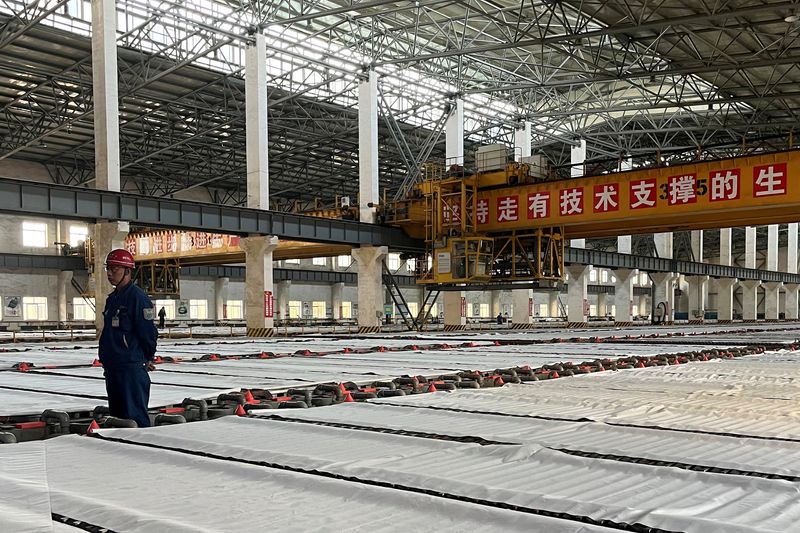By Andy Home
LONDON (Reuters) -An unprecedented collapse in conversion costs spells tough times for the global smelting sector.
Benchmark treatment charges for smelters for next year have been set by a Chilean copper mine Antofagasta (LON:) and China’s Jiangxi Copper.
Smelters such as Jiangxi will receive just $21.50 per ton and 2.125 cents per pound for smelting and refining concentrates from Antofagasta mines to make refined copper.
That’s a huge drop from this year’s benchmark of $80.00 per tonne and 8.0 cents and the lowest result in at least two decades.
At other times, the plunge could have been read as a bullish sign of my shortfall. But by copper standards, mining supply has had a relatively quiet year. Global production is on track to grow by 2.0% in 2024.
Rather, the tension comes from the other side of the supply-demand equation.
Global smelter capacity has expanded too quickly, especially in China. Too many smelters are chasing a finite amount of feed and competition could increase by 2025.
EXPANSION EXPANSION
China’s copper smelting capacity will grow from 14.26 million tons in 2024 to 16 million in 2025 and nearly 17 million in 2027, Ge Honglin, chairman of the China Nonferrous Metals Industry Association, told a conference in late October.
Due to the intense competition for raw materials for all this new capacity, the treatment charges of the spot smelters have remained at a low point this year.
The country’s top producers met in March and agreed to curb production to prevent processing fees from falling further.
All the cuts they made were only enough to slow production momentum. National production still grew 5.0% year-on-year in January-November, according to local data provider Shanghai Metal Market.
That is why the shortage of extracted concentrates is not reflected in the refined metal segment of the copper supply chain.
The International Copper Study Group (ICSG) estimates that the global refined copper market recorded a supply surplus of 402,000 tonnes in the first nine months of the year.
MARGIN SQUEEZE
Smelters are not solely dependent on treatment charges for their income.
They can make money with byproducts such as gold, silver and sulfuric acid. They can adjust affordability and payment term clauses to increase revenue.
They can also choose to split their pricing between the annual benchmark in the first half of 2025 and the mid-year benchmark in the second half, although that only works if treatment rates have recovered by then.
But smelters’ ingenuity can only alleviate the ongoing pressure on margins to a limited extent.
China’s smelter problems are about to be exacerbated by expansion in the rest of the world.
Next year, smelters will open in Indonesia and the Democratic Republic of Congo, reducing those countries’ exports of mined concentrates.
The start-up of the Adani smelter in India means a new buyer on the international concentrate market.
The ICSG forecasts that mine supply growth will accelerate to 3.5% next year, but even that may not be enough to meet smelters’ demand.
SCRAP THREAT
Many Chinese smelters can adjust their input mix from mined concentrate to copper scrap.
While Chinese imports of copper concentrate grew by only 3.2% in the first ten months of 2024, those of recyclable scrap increased by 16%.
However, the incoming administration of Donald Trump poses a threat to the flow of American scrap to China. Shipments came to a virtual standstill in 2019 and 2020 after China retaliated against US tariffs by imposing a 25% levy on recyclable copper from the US.
Trump has stepped up tariff rhetoric again and Chinese scrap importers are already scaling back their purchases of American scrap, fearing a repeat of the tariff wars.
The United States is the second largest supplier of copper scrap to China after Malaysia. China’s imports of U.S. materials totaled 363,000 tons in the first ten months of 2024, accounting for nearly one-fifth of the country’s total demand on the international market.
Simultaneous pressure on extracted concentrates and scrap availability will pose a major challenge for Chinese smelters in the coming months.

Not all of them may survive.
The opinions expressed here are those of the author, a columnist for Reuters.


